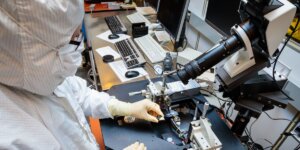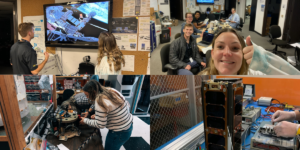
Photo Credit: solidcolours/iStock
Hailed by some as the “Fourth Industrial Revolution”, the past decade has witnessed a significant uptick in innovation. Many Big Tech giants innovated in response to a changing market landscape and disruption within the industry.
In particular, the firms Apple, Google, Meta, Microsoft and Amazon have shown to outperform others in economic influence. At the same time, these five firms have often seen their inventors transition from one firm to another.
USC Information Sciences Institute researcher Mayank Kejriwal and Ph.D student Yidan Sun were intrigued by this phenomenon. They wondered if these “transitioning” inventors found better potential after changing companies, which could bring higher productivity and innovation impact.
Their paper “A structural study of Big Tech firm-switching of inventors in the post-recession era”, which will be presented at the ASONAM conference on November 6, 2023, set out to answer this question and dissect the data behind it.
From Problem to Paper
In 2011, a lawsuit was filed against four Silicon Valley companies that internally agreed not to recruit each other’s employees. Kejriwal recalls being inspired by this dispute to find data-driven proof that job mobility should be improved, not hindered, so that companies could reap greater rewards from innovation.
“There’s been a lot of controversy around this issue,” said Kejriwal. “Some bodies of work argue that the costs of increased mobility would be disproportionate to its benefits. So we wanted to see what happens when people switch firms. Do they become more or less productive, and how do their contributions change?”
One of the key questions the researchers asked themselves was how they could measure productivity. As they were unable to access private data about employees leaving firms and rejoining others, they opted for publicly available data — patent files.
“Inventors can only file patents under one company at a time, so we found it interesting that they would suddenly switch to filing under another company in the middle of their career,” said Sun. “This really triggered my curiosity, so I traced these inventors’ work history via LinkedIn and found that their job switches matched their patent changes. This is one valuable way of recognizing the transition phenomenon that’s happening.”
They hypothesized that after inventors switch from one Big Tech company to another, the number of higher-impact patents (defined by how many times the patent is cited) increases, therefore boosting overall innovation productivity.
Their research efforts, taking data from 1,340 inventors working at the five Big Tech giants between 2010-2022, proved that productivity does go up after transition.
The “Innovator Network” Effects
Kejriwal and Sun also wanted to explore how important these inventors were to their wider circles of influence, and whether they were an integral part of their companies.
“You can think of the ecosystem of Big Tech companies as a social network,” Kejriwal explained. “When inventors file patents with others and work closely in the same company, they form a patent co-authorship network. If the network is tightly knit, if anyone leaves, nothing much happens. But if there’s a single person linking the network together, if they leave, others could be affected.”
Kejriwal and Sun found that the transitioning inventors played central roles in their networks by connecting other inventors together. After they left, fewer collaborations were made between the remaining inventors, causing the network to become more structurally fragmented.
A Novel Approach, A New Avenue
Within the studies of innovation, the USC researchers’ findings occupy a valuable niche that hasn’t yet been explored. Instead of qualitatively describing what “makes for a successful inventor,” their research scientifically quantifies this problem within the Big Tech ecosystem, and carries the potential for much more.
Kejriwal wishes to continue investigating what he terms the “Science of Innovation.” Using the same data, he hopes to pursue other areas such as a generational study of innovation 20 years ago versus innovation nowadays.
“A more ambitious further study could be to consider everything within the Big Tech space, such as blog posts and GitHub code repositories, as manifestations of innovation,” Kejriwal remarked. “With this, we could get a clearer and more complete picture of innovation within the sector, but this will require a lot of heavy-duty work due to the amount of data involved.”
Sun echoes this sentiment, saying that she sees an industry-wide application of their results, and believes that their current data set holds much potential.
“We can also do more comprehensive research on this topic using text-mining and other natural language processing techniques,” she added. “With the same data set, we can identify topics that companies are working on within a certain period by studying patent names. We can observe how innovation interests fluctuate with the times.”
They are confident that their findings are a major step towards understanding innovative processes, and mapping out changes within the Big Tech industry.
Published on November 7th, 2023
Last updated on May 16th, 2024











